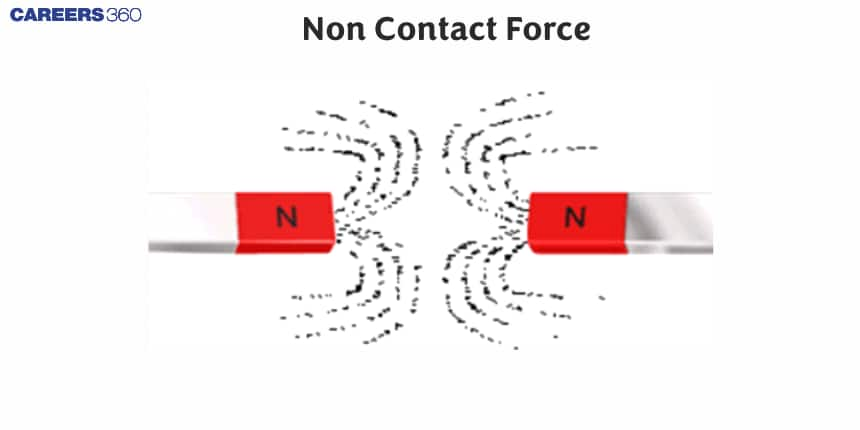Non Contact Force - Definition, Examples, Types, FAQs
When you drop an object it falls on the ground or two magnets attract each other when placed close to each other. But have you noticed that this attraction occurs without any physical contact between them? These events occur because of the Non-Contact forces. As we know forces are of two types- Contact and Non-contact force. To understand the concept of Non- contact forces let's explore the below article.
This Story also Contains
- What is Non-Contact Force?
- Types of Non-Contact Force
- Characteristics of Non-Contact Forces
- Examples of Non-Contact Forces

What is Non-Contact Force?
Non-contact force is applied to an object by another body that is not directly connected to it. These forces act over a distance and are governed by phenomena such as gravitational, magnetic, or electric fields.
Also read -
Types of Non-Contact Force
Non-Contact forces are divided into three major categories as discussed below:
- Gravitational Force
- Electrostatic force
- Nuclear Force
Gravitational Force
The force of attraction between any two objects with respect to their mass, is called gravitational force.
Mathematically it is represented as,
$$
F=G \frac{m_1 m_2}{r^2}
$$
Where,
- $F$ is the force
- $G$ is the gravitational constant
- $m_1$ and $m_2$ are the masses
- $r$ is the distance between their centers
Electrostatic force
The electrostatic force is very similar to gravity, the difference here being that the gravitational force acts between the mass, and the electric force acts between the two charged bodies.
Example of Electrostatic Force
If you rub the comb on your clothes and hold it close to the pieces of paper you will see pieces of paper standing at the end of them that attract the camp. It is made of fine, thin, and neutral particles. This is one of the results of electrical energy.
Nuclear Force
Nuclear force is further divided into two categories
- Strong Nuclear Force: This type is referred to as the strongest force that binds the protons and neutrons in the atomic nucleus.
- Weak Nuclear Force: This type of force is responsible for activities like beta decay, radioactive decay, and nuclear reactions.
Characteristics of Non-Contact Forces
- Action at a Distance: These forces can take place without the objects touching each other.
- Directionality: Non-contact forces always pull (Applying force like gravity, opposite charges in electricity) or push (opposite poles, like charged objects).
- Dependence on Distance: These forces are inversely proportional to the square of the distance between the two objects of interaction.
Examples of Non-Contact Forces
Various examples of non-contact force from our daily lives are provided below.
- The apple that falls to the tree.
- The metal anchors are attracted to the magnetic field without physical contact.
- The downpour of rain on the earth is also an example of non-contact force.
- Two magnets are placed close to each other.
- The fall of the ball toward the ground is due to the force of gravity.
- The leaves that fall from a tree are an example of the non-contact force.
- Electromagnetism is another example of non-contact force.
- When electrical energy is transmitted through a metal it converts it into an electromagnet, it attracts the metal and its target particles, thus, showing non-communication properties.
- Charging hair and attracting pieces of paper towards it.
Frequently Asked Questions (FAQs)
The types of non contact forces are usually gravity, magnetic field, electrical field and nuclear energy.
Examples of this force include: electricity, magnetism, radio waves, microwaves, infrared, visible light, X-rays and gamma rays.
Normal force is a contact force. If two surfaces are not in contact, they can't exert a normal force on each other.
Non contact force is any force applied to an object by another body without contact. For example, magnetic field, gravity, and electric current.